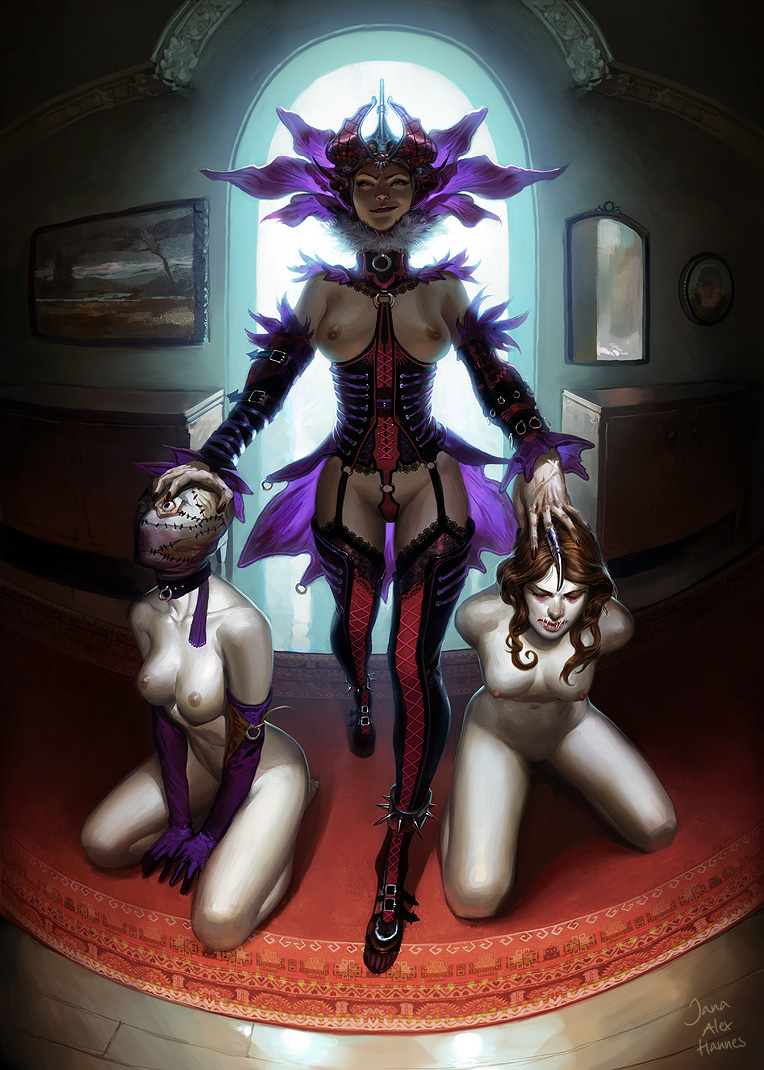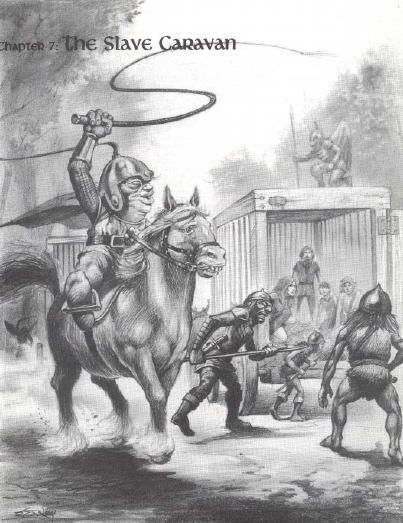-
|
|
|
|
|
|
|
|
|
|
|
|
In feudalistic societies, no person not of gentle or noble birth would be allowed weapons of offense, other than those for hunting.
Therefore, swords, lances,
maces, etc. would be totally banned.
In societies which heavily oppress the
commoners, serfs and/or slaves will be even more restricted than common
peasants.
They can have no weapon
of any sort whatsoever.
They cannot leave their AREA, be it a
farm, estate, village, or whatever.
They are chattel.
Peasants, serfs, and slaves generally resent
this treatment.
Revolts of these sorts of peoples are
common in history.
Any character who forces peasantry, serfdom,
or slavery upon any inhabitants of an AREA he || she controls will have
to be very careful to guard against uprisings.
The oppressed folk will most certainly attempt an uprising once every five
years, min..
If there is weakness noted, there will
be an uprising immediately.
If a rising does occur, the PC must suppress
it as soon as
possible. If it lasts more than one month,
the revolting folk will gain experience,
organization, recruits, and better weapons
&& armor. Therefore,
for each full month of successful revolt,
add 10% to the number of
people in revolt, assume 10% of the total
force becomes equal to regular
men-at-arms in training and armor &&
weapons,
and allow them greater tactical ability.
After six
months of successful revolt, the rebellion
can be assumed to have taken on the status of a civil war,
and the revolutionaries will be able to
field something approximating a regular military force.
-
FREQUENCY:
NO. APPEARING:
ARMOR CLASS:
MOVE:
HIT DICE:
% IN LAIR:
TREASURE TYPE:
NO. OF ATTACKS:
DAMAGE/ATTACK:
SPECIAL ATTACKS: Nil
SPECIAL DEFENSES: Nil
MAGIC RESISTANCE: Standard
INTELLIGENCE: 3d6
ALIGNMENT:
SIZE: M
PSIONIC ABILITY: Nil
Attack/Defense Modes:
Nil
LEVEL/X.P. VALUE:
Farmer: 2-7 HP if male, 2-5 HP if female.
Fights as 0 level.
See T1 Village of Hommlet.
FREQUENCY:
NO. APPEARING:
ARMOR CLASS:
MOVE:
HIT DICE:
% IN LAIR:
TREASURE TYPE:
NO. OF ATTACKS:
DAMAGE/ATTACK:
SPECIAL ATTACKS: Nil
SPECIAL DEFENSES:
MAGIC RESISTANCE: Standard
INTELLIGENCE:
ALIGNMENT:
SIZE:
PSIONIC ABILITY: Nil
Attack/Defense Modes:
Nil
LEVEL/X.P. VALUE:
Farmer: 2-7 HP if male, 2-5 HP if female.
Fights as 0 level.
See T1 Village of Hommlet.

FREQUENCY: *
NO. APPEARING: *
ARMOR CLASS: *
MOVE: *
HIT DICE: *
% IN LAIR: *
TREASURE TYPE: Nil
NO. OF ATTACKS: 1
DAMAGE/ATTACK: *
SPECIAL ATTACKS: Nil
SPECIAL DEFENSES: Nil
MAGIC RESISTANCE: Standard
INTELLIGENCE: *
ALIGNMENT: *
SIZE: M
PSIONIC ABILITY: Nil
Attack/Defense Modes:
Nil
LEVEL/X.P. VALUE:

* = Varies
Slaves have a -30% loyalty mod.
Slaves have a -30% reaction mod.
With regards to the latter, it is sensible
to treat this as a postive modifier, towards rescuers.
<The following is just
for reference, and will be deleted when the statblocks above are finished.
See TYPICAL INHABITANTS>
The bulk of the people met
on an adventure in an inhabited AREA -
whether city, town, village,
or along the roads through the countryside,
will be average folk, with
no profession as adventurers know it, and no
special abilities for clericism,
fighting, magic, or thievery. They are simply
typical, normal people (as
you define typical and normal for the milieu, of
course). When dealing with
these types, it is suggested that the following
factors be used:
| General Classification | Hit Points | Combat Ability |
| sedentary females | 1 - 3 | -3 |
| sedentary males | 1 - 4 | -2 |
| active females | 1 - 4 | -1 |
| active males | 2 - 5 | 0 level |
| laboring females | 2 - 5 | 0 level |
| laboring males | 2 - 7 | 0 level |
Sedentary occupations
are those where the individual does nothing, or is a
clerk, scribe, etc.
Active occupations
are those involving considerable movement and
activity such as a serving
maid, carpenter, etc.
Laboring occupations
are strenuous and include farming, mining, and most menial labor tasks.
<Piscodaemons
are oftimes summoned to the Prime Material Plane
to act as labor or guards.>
Innkeeper (terrain: village, TPL12:2nd) (REF3.77)
<
Add as a quick reference
note? Add this note to hirelings?
General Characters:
Roll 3d6 for each ability as usual,
but use
average scoring by considering any 1 as a 3 and any 6 as a 4.
<General
Characters would include Typical Inhabitants &
Hirelings>
>
<link to here from Men
in the Monster Manual?>